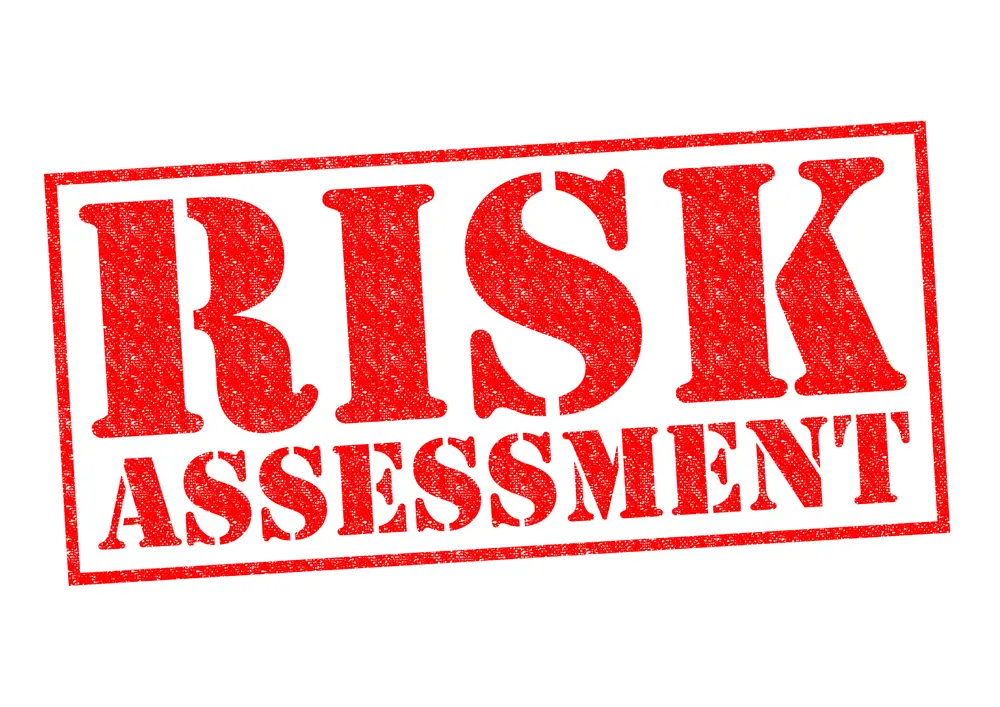Organizations looking to ensure they meet necessary compliance standards and minimise the risk of non-compliance issues should consider a meal compliance risk assessment tool.
This valuable tool can help identify potential compliance risks and evaluate their severity, allowing organizations to develop effective strategies to mitigate the risks.
This article will discuss the different meal compliance assessments available and the components of a comprehensive meal compliance risk assessment tool.
Organizations can manage their meal compliance risks with the right assessment tool.

Purpose of Risk Assessment Tool
This paragraph provides an overview of the Meal Compliance Risk Assessment Tool, focusing on its purpose.
The tool is designed to assess the risk of non-compliance with meal requirements systematically and objectively.
By evaluating various factors such as menu planning, food preparation, and food safety practices, the tool helps identify potential areas of non-compliance and provides recommendations for improvement.
Its purpose is to assist organizations in ensuring that meals meet the necessary standards and regulations, ultimately promoting the health and well-being of individuals.
Overview of Meal Compliance Risk Assessment Tool
An academic overview of the Meal Compliance Risk Assessment Tool comprehensively evaluates its functionalities and applications.
The assessment tool is designed to evaluate the compliance of meal providers with established regulations and guidelines. It assists in identifying critical area violations and potential risks related to meal compliance.
The tool comprises various components that enable a thorough assessment, including an offsite review and claims review process.
Based on documentation and records, off-site assessments evaluate the meal provider’s compliance.
The tool helps identify errors and deviations from the required standards, ensuring that meal providers adhere to the regulations.
The National School Lunch Program, under the guidance of the Healthy, Hunger-Free Kids Act and schools to review, has implemented a robust off-site assessment tool and review cycle to ensure that school food service accounts comply with the nutritional requirements outlined in the regulations.
This assessment includes an off-site review, a 3-year administrative review requirement
focusing on critical components like Fresh Fruit and Vegetable Program offerings, food components, error-prone areas, and dietary specification violations.
The comprehensive 3-year administrative review cycle ensures daily participation of eligible children, keeping an eye on potential PS-1 and PS-2 violations, including egregious nutrition-related violations, benefit issuance violations, or repeated PS-2 violations for adequate review using administrative review rulemaking tools.
During the entire review period, FNS Administrative Review Manual provides guidance documents, tools, and procedures to conduct thorough examinations, such as the Coordinated Review Effort Procedures Manual and menu review approach.
One of the key program elements includes a 5-year review cycle that covers schools’ compliance with unified accountability.
Part of the review process includes the week of review that may focus on benefit issuance review and specific requests for school review based on risk schools and school selection criteria.
Special attention is given to areas like the Afterschool Snacks and Seamless Summer Option to provide children with consistent application and meal access.
Furthermore, action for certification, fiscal action procedures, and corrective action documentation are vital administrative review tools for handling any applicable violations.
Nationwide training and mandatory prereview training are provided to all involved to ensure the correct claims and availability of resources, even with limited resources.
From frozen fruit to the collection of household applications, the entire system works on improving access and creating a healthy school environment.
Ultimately, the intricate analysis of school meals and meticulous monitoring of individual schools, non-profit school food service accounts, and non-reviewed schools ensures a seamless operation, focusing on the children’s best interests and fostering a healthy, hunger-free education culture.
In the intricate framework of the National School Lunch Program, a 3-year review cycle is implemented to ensure adherence to quality and compliance standards in school meal programs.
This approach involves Follow-up reviews, agency reviews, certification reviews, and periodic reviews, all encapsulated within an existing 3-year administrative review cycle.
School food authorities are mandated to undergo these evaluations with the review month and week of review determined based on the specific needs and compliance status.
During this time, requests for review may be raised, and review flexibilities are provided to schools to ensure the adequacy of the evaluation.
Certifications for review are examined using the Assessment Tool (OAT), and the timing of reviews is strategically planned.
The nature of review findings might reveal issues such as PS-1 Violations or more egregious violations that require immediate action for benefit correction.
The monitoring of schools extends to additional schools, focusing on analyses of school meals, and includes the examination of service benefit issuance documents over consecutive school days.
This comprehensive administrative review approach helps identify error factors, including involuntary errors, ensuring that the school meals programs operate within the required guidelines.
Attention is also paid to the quantities and quality of food served, including the requisite cup of fruits, and checks for insufficient quantities.
The Claim for Reimbursement process is aligned with Federal funds to ensure that resources are distributed appropriately, leading to improved access for all eligible children in the current school system.
The entire process is well-documented within a centralized document library, allowing for transparency and accountability in this vital aspect of child welfare and education.
This cohesive and well-structured review mechanism fortifies the integrity of the National School Lunch Program and contributes to the overall success and health of the nation’s youth.
Compliance reviews can be conducted efficiently and effectively by utilizing the meal compliance risk assessment tool, providing valuable insights into potential violations and improving the overall compliance process.
Types of Meal Compliance Assessments
This discussion will explore various meal compliance assessments, including administrative reviews, comprehensive reviews, off-site assessments, claims review process, and school breakfast and nonprofit school food service.
Administrative reviews evaluate schools’ compliance with meal program regulations, while comprehensive reviews provide a more thorough assessment of program operations and compliance.
Off-site assessments are conducted remotely, and the claims review process involves verifying the accuracy of meal reimbursement claims.
Finally, the discussion will discuss the role of school breakfast programs and nonprofit school food service in ensuring compliance with meal program requirements.
Administrative Reviews
Administrative reviews are a crucial component of the meal compliance risk assessment tool. These reviews assess the compliance of institutions participating in the program with recordkeeping requirements, program participation, and resource management.
The purpose of administrative reviews is to ensure that institutions are meeting the necessary standards and taking corrective actions where needed.
The review process involves several steps, including an entrance conference where the review’s objectives are discussed, the review itself, which includes a comprehensive review of the institution’s records and practices, and exit conferences where findings and recommendations are discussed.
Administrative reviews help identify areas of improvement and provide guidance and training to institutions to enhance their compliance.
The findings of administrative reviews are compiled in an administrative review report, which serves as a program evaluation and improvement tool.
Comprehensive Reviews
Comprehensive reviews thoroughly evaluate institutions’ adherence to recordkeeping requirements, program participation, and resource management.
These reviews play a crucial role in ensuring the effectiveness and compliance of the meal compliance risk assessment tool.
Key aspects of comprehensive reviews include:
- School breakfast: Assessing the implementation and effectiveness of the school breakfast program, including meal service and participation rates.
- Nonprogram foods: Evaluating the provision and monitoring of nonprogram foods, such as competitive foods and snacks, to ensure compliance with nutrition standards and regulations.
- Administrative review process: Examining the overall administrative review process, including the selection of schools for review and the role of the review official.
- Documentation review: Scrutinizing the accuracy and completeness of documentation, such as meal counts and reimbursement claims, to ensure compliance with administrative review requirements.
By conducting comprehensive reviews within the established year review cycle, institutions can identify areas for improvement and maintain compliance with the meal compliance risk assessment tool.
Off-site Assessments
Off-site assessments are an essential component of the meal compliance risk assessment tool. These assessments involve conducting comprehensive reviews of program operations at locations other than the primary site.
The purpose of off-site assessments is to identify potential risks and areas for improvement to ensure compliance with federal child nutrition efforts.
This assessment tool includes risk assessment protocols, which evaluate various aspects of program operations, such as certification errors, meal pattern errors, and components of program oversight.
The findings from these assessments are crucial for developing corrective action plans and implementing necessary changes.
Additionally, off-site assessments are vital in centralized recordkeeping, providing valuable program monitoring and evaluation documentation.
Adequate funding and resources are allocated towards conducting off-site assessments to enhance program integrity and accountability.
| Risk Assessment Protocols | Corrective Action Plans |
|---|---|
| Certification Errors | Implementation of corrective measures based on assessment findings |
| Meal Pattern Errors | Monitoring progress and ensuring compliance with federal guidelines |
| Component of Program Oversight | Addressing areas of non-compliance and improving program efficiency |
| Centralized Recordkeeping | Documenting assessment results and maintaining a comprehensive record |
| Administrative Funds | Allocating resources for conducting off-site assessments and implementing changes |
Claims Review Process
The claims review process is an integral part of ensuring program integrity and adherence to federal guidelines. It plays a crucial role in evaluating the accuracy and validity of claims made by program participants.
The meal compliance risk assessment tool is used during this process to identify potential issues and assess compliance with program requirements.
The claims review process involves examining various aspects, such as administrative review activities, recordkeeping, access to benefits, and food quantities. Any benefit issuance errors or non-compliance with program regulations are identified and documented for corrective action.
The administrative review manual guides the claims review process and provides detailed instructions on conducting the review and documenting findings.
This systematic approach helps to identify and address any potential program violations, ensuring program integrity and the effective use of resources.

School Breakfast and Nonprofit School Food Service
School breakfast and nonprofit school food service are critical in ensuring students have access to nutritious meals during the school day.
These programs provide students with healthy food options, help address food insecurity issues, and promote overall well-being.
A meal compliance risk assessment tool can be utilized to evaluate these programs’ compliance effectively. This assessment tool assesses various aspects of meal compliance, such as menu planning, food safety practices, and nutritional standards.
By using this tool, schools and nonprofit organizations can identify areas of improvement and take necessary actions to ensure that meals provided to students meet the required standards.
This proactive approach helps maintain the integrity and quality of school breakfast and nonprofit school food service programs, ultimately benefiting the health and well-being of students.
| Category | Assessment Criteria | Compliance Level |
|---|---|---|
| Menu Planning | Variety of nutritious options | Meets standards |
| Food Safety Practices | Proper storage and handling procedures | Meets standards |
| Nutritional Standards | Adequate nutrient content | Meets standards |
| Record Keeping | Accurate documentation of meals served | Meets standards |
School Wellness Policy, Food Service Accounts, and Critical Area Violations
One important aspect of the current subtopic revolves around implementing and enforcing school wellness policies, managing food service accounts, and addressing critical area violations.
The school wellness policy plays a crucial role in ensuring the quality of school meals and creating a healthy school nutrition environment. It outlines guidelines for the types of foods and beverages offered to students and requirements for nutrition education and physical activity.
Managing food service accounts is essential for ensuring the financial stability of school nutrition programs.
It involves monitoring revenue and expenses, tracking meal participation, and managing unpaid meal charges.
Addressing critical area violations is necessary to maintain compliance with food safety regulations and prevent any potential health risks.
A meal compliance risk assessment tool can assist the school food authority in identifying areas of noncompliance with resource management and implementing corrective actions.
- School wellness policy.
- Food service accounts management.
- Addressing critical area violations.
Components of a Meal Compliance Risk Assessment Tool
Resource management is a crucial component of such a tool as it involves the allocation and utilization of various resources in order to ensure compliance with meal requirements.
This includes the effective management of personnel, time, and financial resources to ensure that meals are prepared and served in accordance with the necessary guidelines and regulations.
Resource Management
To effectively manage resources, assessing meal compliance risk requires strategies prioritising allocating and utilising available resources.
This ensures that the necessary components of a meal compliance risk assessment tool are effectively utilized to minimize the risk of non-compliance.
The following are four key strategies for resource management in the context of meal compliance risk assessment:
- Resource identification: This involves identifying all the resources required for conducting a comprehensive assessment, such as personnel, technology, and financial resources.
- Resource allocation: Once the resources have been identified, they must be allocated effectively to different aspects of the assessment process, ensuring that each component receives adequate resources.
- Resource utilization: Efficient utilization of resources is crucial to ensure that they are effectively utilized and not wasted. This includes proper training of personnel, efficient use of technology, and careful budgeting.
- Resource monitoring and evaluation: Regular monitoring and evaluation of resource utilization allow for the timely identification of any inefficiencies or bottlenecks, enabling appropriate adjustments to optimize resource management.
Implementing these strategies, organizations can effectively manage resources in the context of meal compliance risk assessment, enhancing the overall effectiveness and efficiency of the process.
Frequently Asked Questions
How is the meal compliance risk assessment tool different from other tools used in the food industry?
The meal compliance risk assessment tool differs from other risk assessment tools in the food industry by specifically focusing on evaluating the compliance of meals with regulatory standards, ensuring adherence to food safety protocols and minimizing potential risks associated with non-compliance.
Can the meal compliance risk assessment tool be used for individual meals and large-scale catering events?
The meal compliance risk assessment tool can be used for individual meals and large-scale catering events.
It comprehensively analyses potential risks, ensuring food safety and compliance with regulations in various food service settings.
What common challenges or limitations are associated with using a meal compliance risk assessment tool?
Common challenges and limitations associated with using a meal compliance risk assessment tool include subjective interpretation of compliance criteria, lack of standardized guidelines, difficulty in assessing certain compliance aspects, and the need for continuous updates to account for evolving regulations.
How often should the meal compliance risk assessment tool be updated or reviewed to ensure its effectiveness?
The effectiveness of the meal compliance risk assessment tool should be reviewed and updated regularly to ensure its accuracy and relevance.
The frequency of updates may vary depending on regulations, guidelines, or organizational policy changes.
Are there any specific regulations or guidelines on which the meal compliance risk assessment tool is based?
The meal compliance risk assessment tool is based on specific regulations and guidelines to ensure its effectiveness.
These regulations and guidelines provide a framework for assessing and managing risks related to meal compliance systematically and consistently.

Conclusion
A meal compliance risk assessment tool aims to evaluate and mitigate potential risks related to meal compliance.
This tool helps organizations in the food industry identify areas of non-compliance and implement corrective actions.
There are various types of meal compliance assessments, including ingredient compliance, labelling compliance, and food safety compliance.
The components of a meal compliance risk assessment tool typically include a checklist, evaluation criteria, a scoring system, and recommendations for improvement.
Implementing such a tool can help organizations ensure compliance with regulations and maintain food safety standards.

Chris Ekai is a Risk Management expert with over 10 years of experience in the field. He has a Master’s(MSc) degree in Risk Management from University of Portsmouth and is a CPA and Finance professional. He currently works as a Content Manager at Risk Publishing, writing about Enterprise Risk Management, Business Continuity Management and Project Management.

